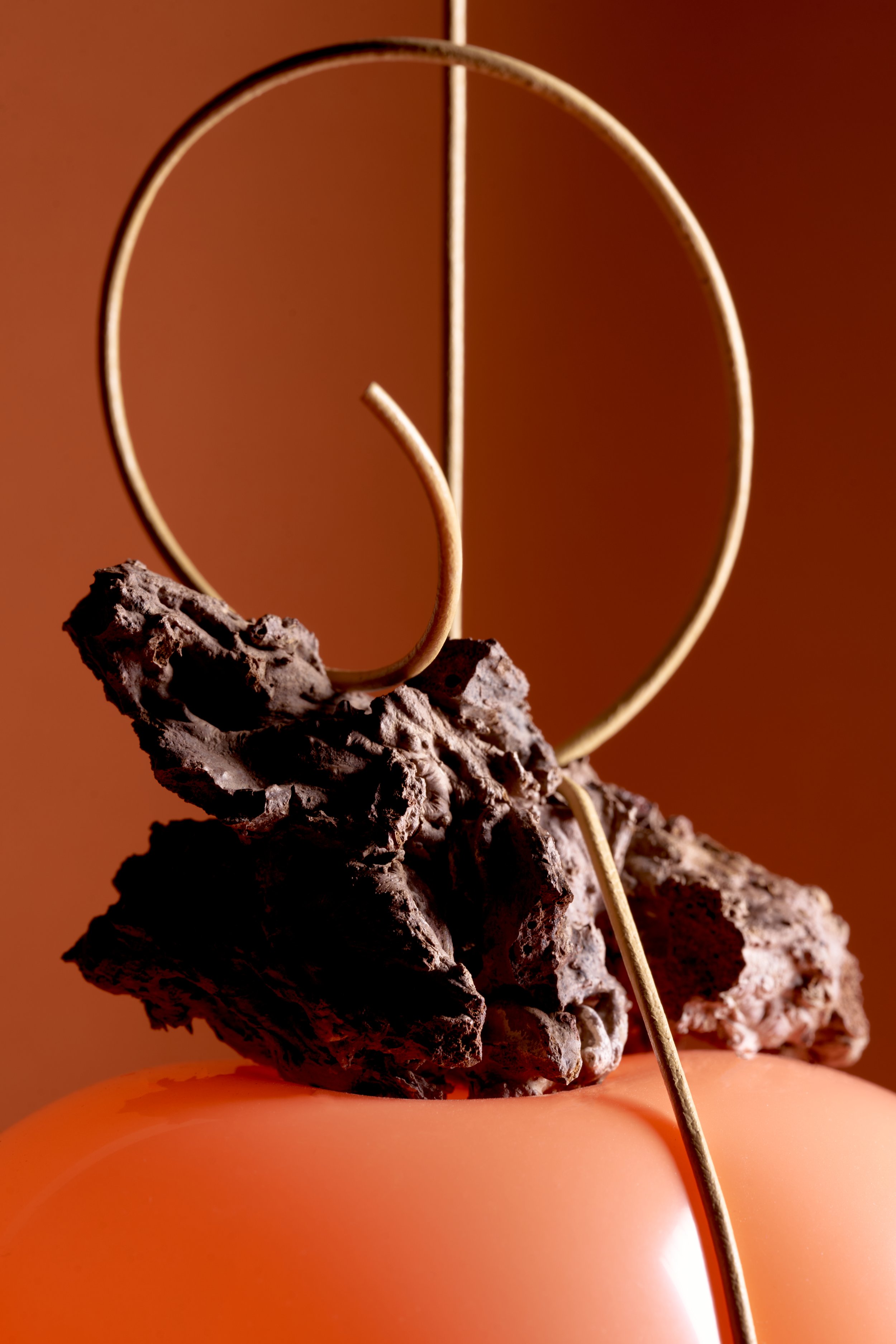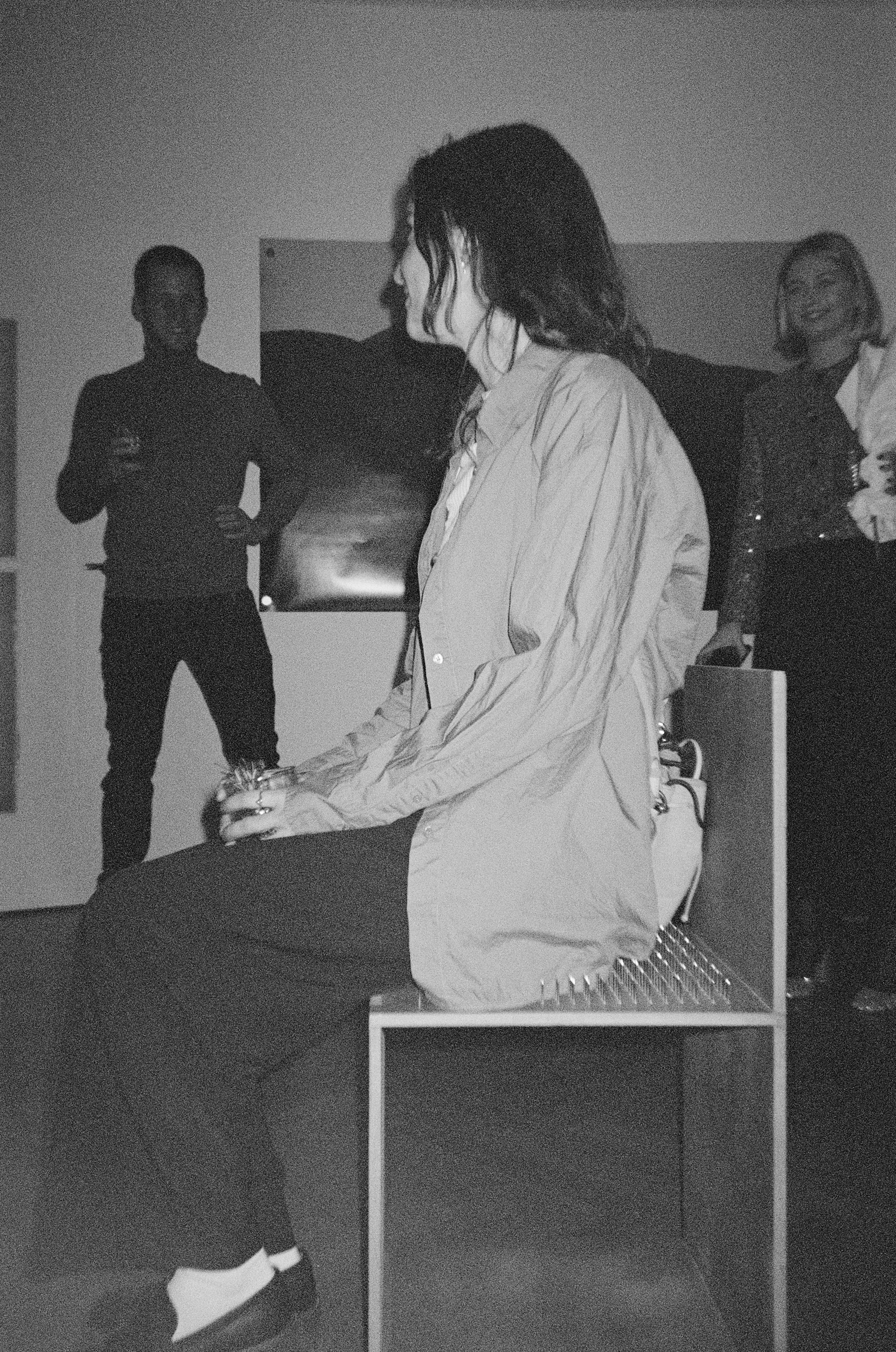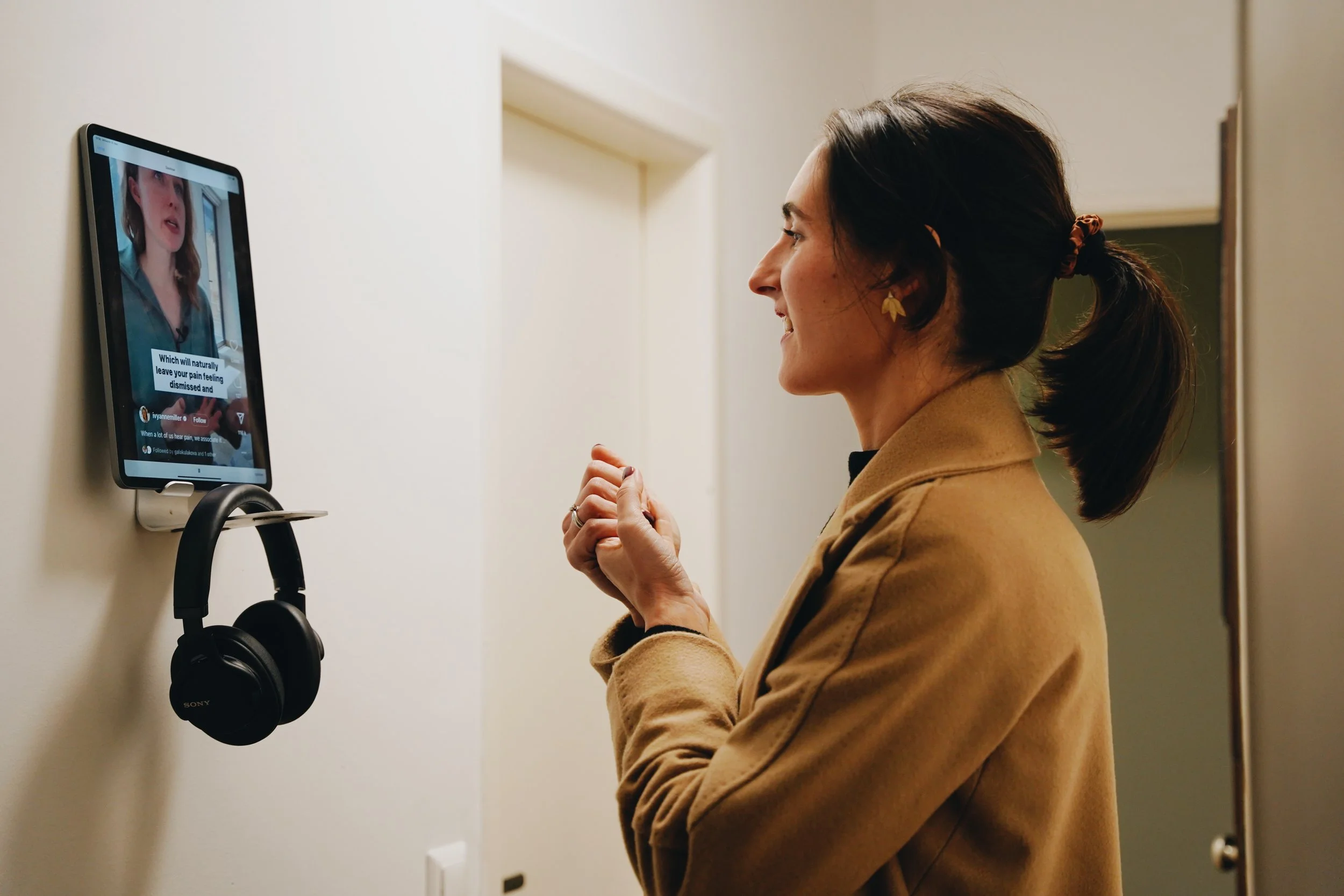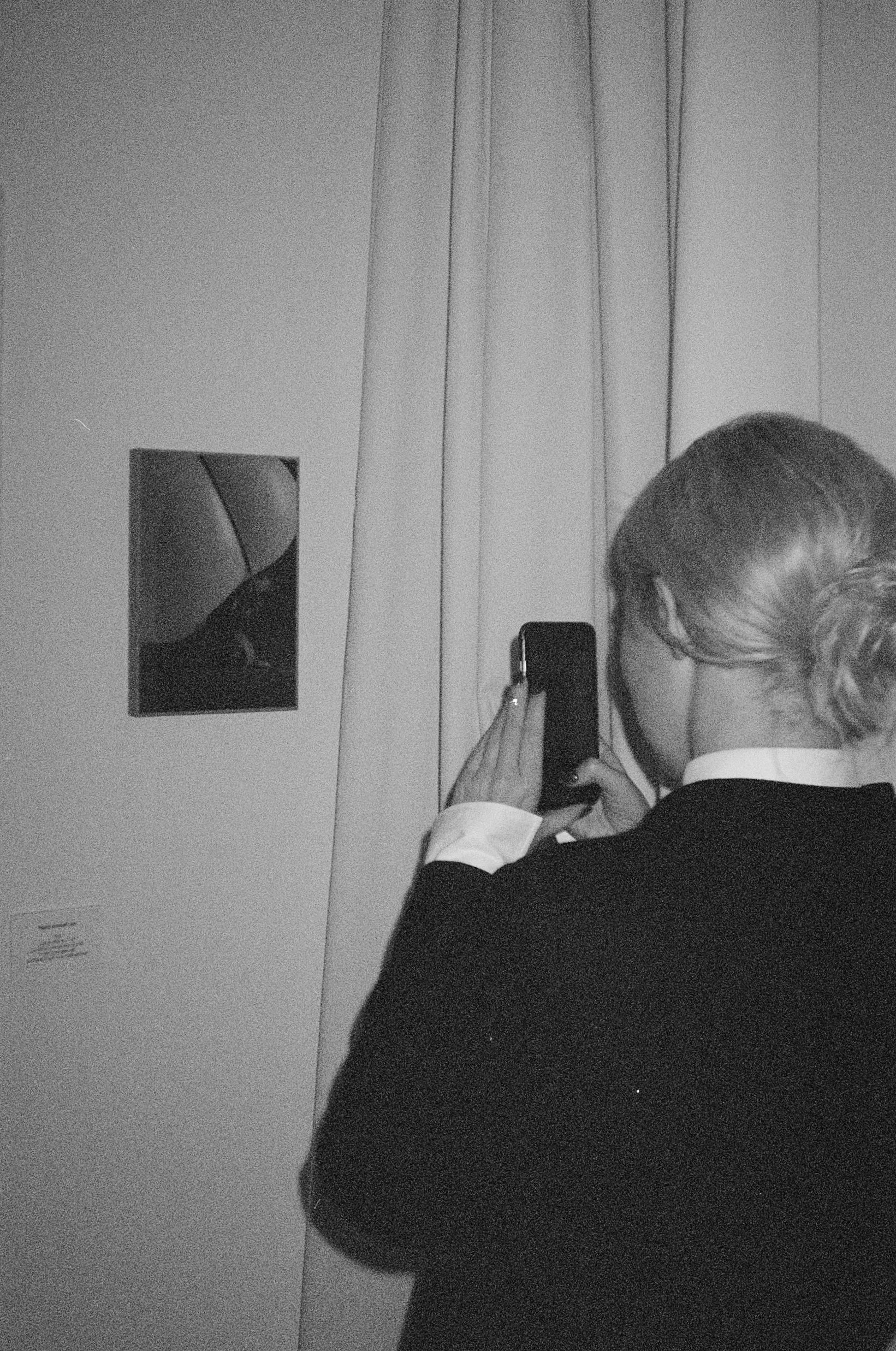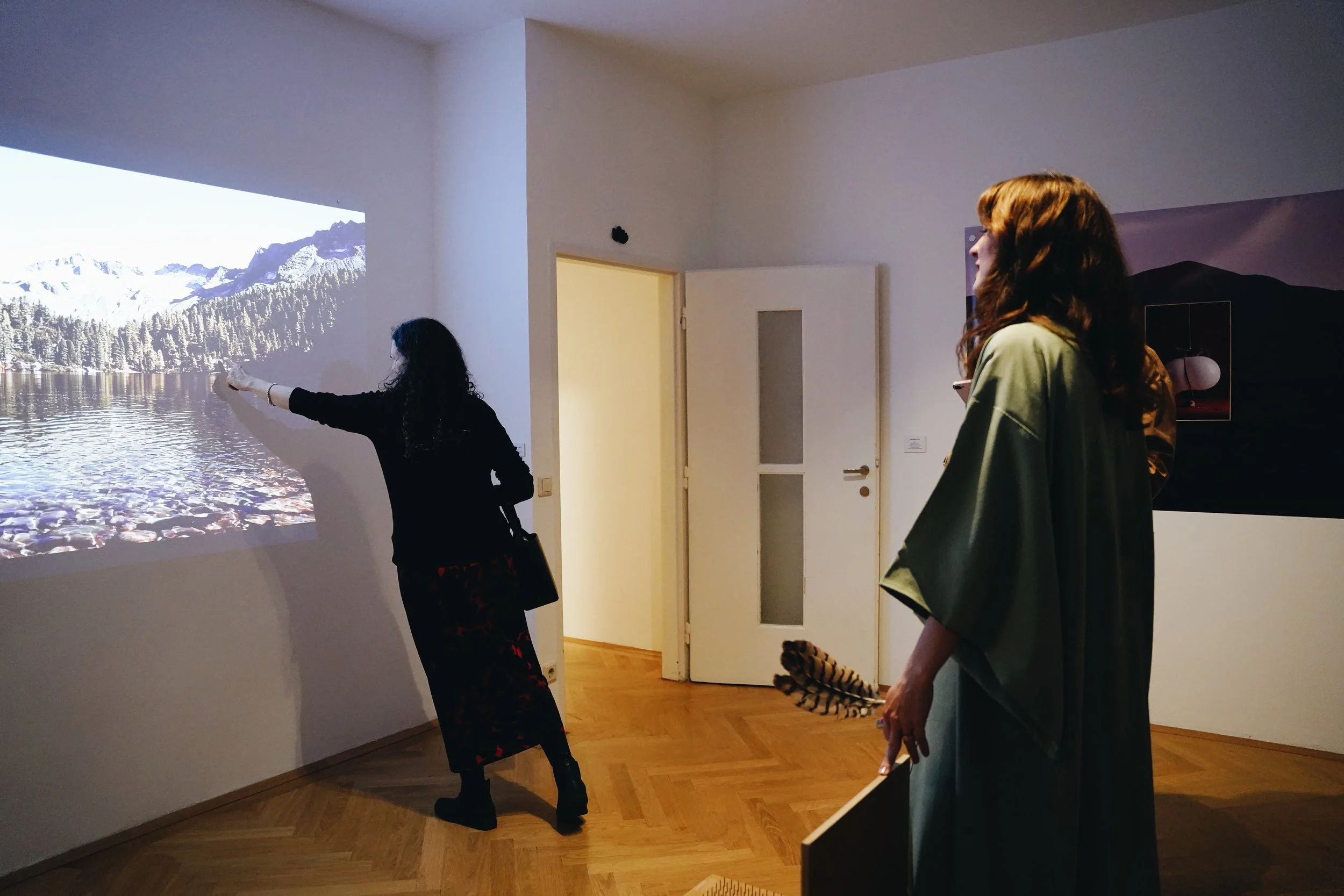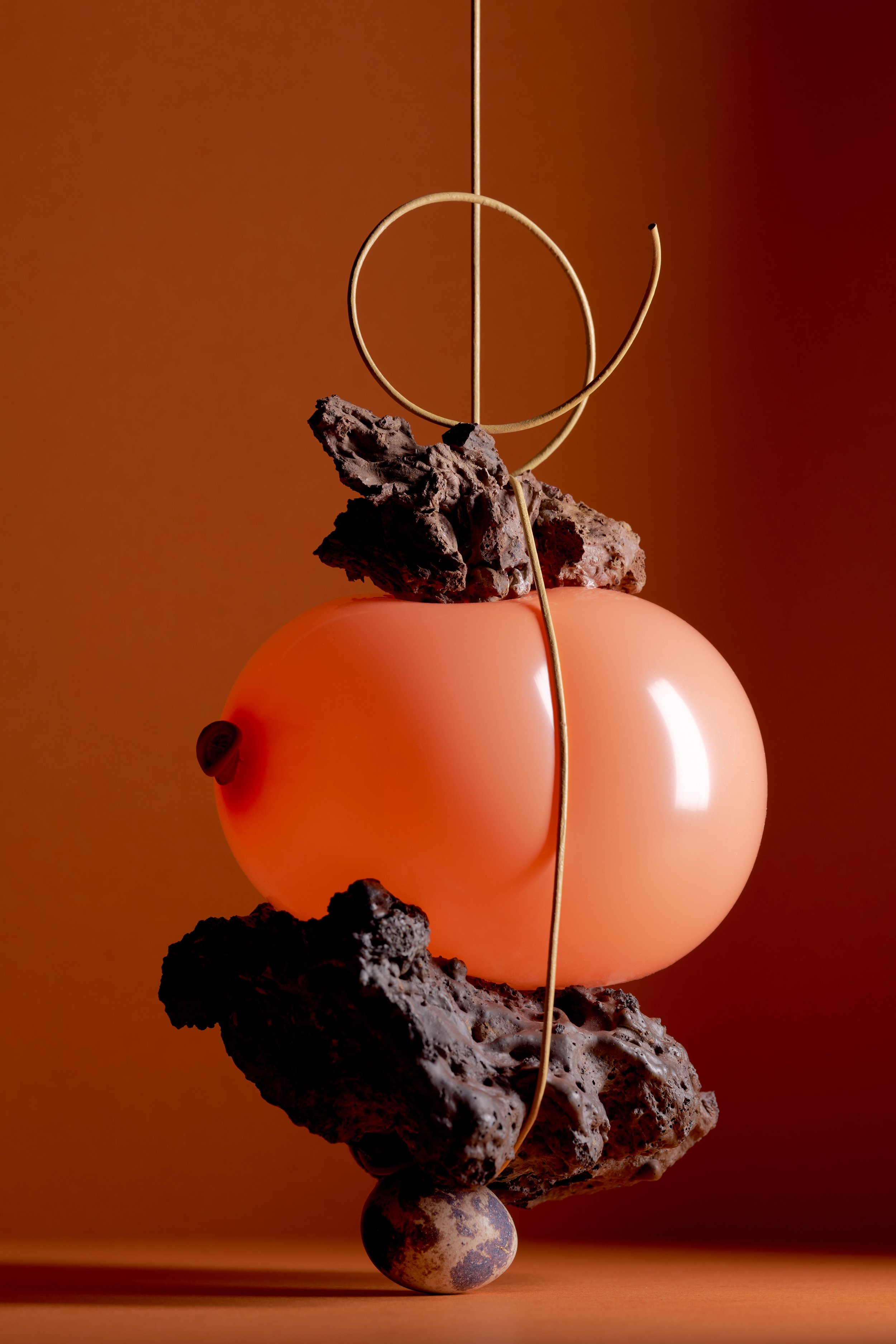Trauma Bondage
In Trauma Bondage, the inaugural exhibition at Vienna Collectors Club’s new space at Hochhaus Herrengasse, Kristina Kulakova explores trauma as an invisible force that distorts perception and shapes attachment. Through photographic still lifes and two video installations, she examines the emotional and societal dynamics of trauma bonds, where pain can mimic love. Her sculptural compositions—featuring balloons, lava stones, eggshells, dried tulips, string, and leather—echo the Japanese art of Shibari, balancing fragility and tension.
The exhibition includes landscape wallpapers of lava fields and the video Pain That I'm Used To, which contrasts a serene lake with a chair embedded with nails—symbolizing the search for comfort in discomfort. Another piece, Instant Therapy, questions the algorithmic promise of online “healing” content. With Trauma Bondage, Kulakova transforms her studio into a space of personal reflection, inviting viewers to engage with trauma’s tenderness, tension, and potential for change.
DETAILS:
LIST OF WORKS:


